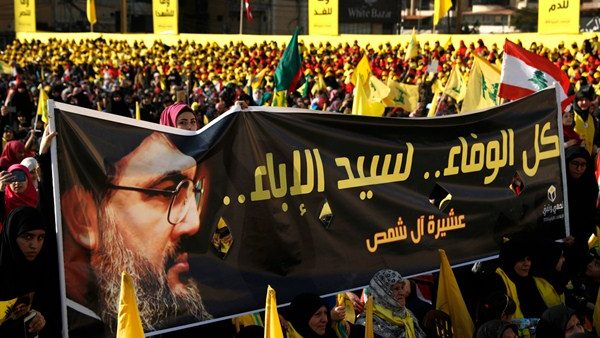In the Arab world, Hasan Nasrallah is an exceptional man. In an age of dull orators and boring Arab officialdom, Nasrallah, in the eyes of many Arabs, stands as one of the few charismatic, honest, and appealing figures in the Middle East. His inflammatory speeches have done wonders for the moral of his followers since he liberated South Lebanon from Israeli occupation in May 2000. He has earned a reputation -- among enemy and ally alike -- as a man who keeps his word. He promised to liberate the South and he did in 2000. He promised to bring back Lebanese prisoners from Israel jails in 2004 and he did. He promised to strike deep into Israeli territory in 2006 and he did. Many Arabs today compare him to Gamal Abdul-Nasser, the late president of Egypt and godfather of Arab nationalism, who fought two wars against Israel in 1956 and 1967. Nasser, like Nasrallah, was young and defiant, revolutionary, and highly charismatic. Both were excellent orators and both had a massive following in the Arab world. Like Nasser in 1952-1970, Nasrallah today is viewed as a selfless and uncorrupted leader who firmly believes in a cause and has mobilized his life and country for its purpose. However, hundreds of books and articles were written about Nasser, making him a legend during in his own lifetime. And this literature increased threefold after his early death in 1970. Nasrallah also has become a legend in his own lifetime. But apart from what has surfaced in the press over the past week, little -- very little -- is known about the 46-year-old man who has just ignited a new war in the Middle East.
The Beginnings
Hasan Nasrallah was born on August 31, 1960, in Beirut. His father was a vegetable vendor from the Bassouriyeh village in South Lebanon. He grew up in the 1960s, at a time when Beirut was considered the "Paris of the East" under the presidency of General Fouad Shihab. Tourism, banking, investment, and entertainment were at their peak in Beirut, but not in the Shiite suburbs of the Lebanese capital. The Shiites of Lebanon were a majority in the Muslim community who had long suffered from Sunni domination, especially during the 400-years of the Ottoman Empire. Located in the eastern Bekka Valley, they survived during the early years of the 20th century through trade with Palestine, which was cut off completely by the creation of Israel in 1948. Consecutive regimes were occupied with nation-building and attracting foreign investment to Lebanon, and all of them seemingly forgot about the Shiites. Their targets for prosperity were the Maronite Community of the Lebanese president and the Sunni Muslim one of his prime minister. The Shiites did have their deputies in the Lebanese Parliament, but even then they were absentee feudal landlords who paid little attention to Shiite grievances and were not representative of the Shiite community at a grassroot level. The Shiites, as a result, were completely forgotten during the booming years of Lebanon, becoming an underclass from the 1940s onwards. This continued well into the 1970s and in 1974, although they made up 20% of the population, the Shiites only received 0.7% of the state budget. Meanwhile, the rest of the money was pouring into Beirut.
The leader to bring them out of the ghettos and earn political recognition for the Shiite community was the Iran-born cleric Imam Musa al-Sadr, who emerged at a time when social divisions were at their peak. He called on the Shiites to unite and demand a better life in Lebanon. He demanded more government funds for the Shiite community, better infrastructure, increased representation in politics, and more access to government jobs. Sadr then created the Movement of the Dispossessed in 1974, calling for emancipation of the Shiites. When Nasrallah was first exposed to politics in the early 1970s, Musa al-Sadr was the inspiring leader of the Lebanese Shiites. The effect he had on Nasrallah was monumental. When the civil war of Lebanon broke out in April 1975, Sadr founded a military branch for his party called Amal (Hope). It was trained by the Palestinian forces of Yasser Arafat, and flourished in the suburbs of Beirut, where the Shiite community was located. This is when Nasrallah came into contact with Sadr and joined Amal.

